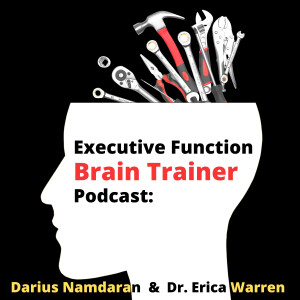
- Podcast Features
-
Monetization
-
Ads Marketplace
Join Ads Marketplace to earn through podcast sponsorships.
-
PodAds
Manage your ads with dynamic ad insertion capability.
-
Apple Podcasts Subscriptions Integration
Monetize with Apple Podcasts Subscriptions via Podbean.
-
Live Streaming
Earn rewards and recurring income from Fan Club membership.
-
Ads Marketplace
- Podbean App
-
Help and Support
-
Help Center
Get the answers and support you need.
-
Podbean Academy
Resources and guides to launch, grow, and monetize podcast.
-
Podbean Blog
Stay updated with the latest podcasting tips and trends.
-
What’s New
Check out our newest and recently released features!
-
Podcasting Smarter
Podcast interviews, best practices, and helpful tips.
-
Help Center
-
Popular Topics
-
How to Start a Podcast
The step-by-step guide to start your own podcast.
-
How to Start a Live Podcast
Create the best live podcast and engage your audience.
-
How to Monetize a Podcast
Tips on making the decision to monetize your podcast.
-
How to Promote Your Podcast
The best ways to get more eyes and ears on your podcast.
-
Podcast Advertising 101
Everything you need to know about podcast advertising.
-
Mobile Podcast Recording Guide
The ultimate guide to recording a podcast on your phone.
-
How to Use Group Recording
Steps to set up and use group recording in the Podbean app.
-
How to Start a Podcast
-
Podcasting
- Podcast Features
-
Monetization
-
Ads Marketplace
Join Ads Marketplace to earn through podcast sponsorships.
-
PodAds
Manage your ads with dynamic ad insertion capability.
-
Apple Podcasts Subscriptions Integration
Monetize with Apple Podcasts Subscriptions via Podbean.
-
Live Streaming
Earn rewards and recurring income from Fan Club membership.
-
Ads Marketplace
- Podbean App
- Advertisers
- Enterprise
- Pricing
-
Resources
-
Help and Support
-
Help Center
Get the answers and support you need.
-
Podbean Academy
Resources and guides to launch, grow, and monetize podcast.
-
Podbean Blog
Stay updated with the latest podcasting tips and trends.
-
What’s New
Check out our newest and recently released features!
-
Podcasting Smarter
Podcast interviews, best practices, and helpful tips.
-
Help Center
-
Popular Topics
-
How to Start a Podcast
The step-by-step guide to start your own podcast.
-
How to Start a Live Podcast
Create the best live podcast and engage your audience.
-
How to Monetize a Podcast
Tips on making the decision to monetize your podcast.
-
How to Promote Your Podcast
The best ways to get more eyes and ears on your podcast.
-
Podcast Advertising 101
Everything you need to know about podcast advertising.
-
Mobile Podcast Recording Guide
The ultimate guide to recording a podcast on your phone.
-
How to Use Group Recording
Steps to set up and use group recording in the Podbean app.
-
How to Start a Podcast
-
Help and Support
- Discover

Executive Function Brain Trainer Podcast
Education:Self-Improvement

#4 What is Working Memory and How Can We Strengthen This Skill?
Working memory is a complex cognitive skill that enables learners to hold pieces of information in the mind and manipulate them. It is often described as a mental workspace that helps individuals manage their memories, stay focused, block distractions, and stay abreast of their surroundings.
Alan Baddeley's theory:
- Sensory Input and Memory enable one to briefly retain the environmental information that enters cognition through our senses.
- Short-Term Memory then holds a small amount of information in an active, usable state.
- Central Executive, at the same time, directs attention and allocates priority to the two following processing activities:
- Visual-Spatial Sketchpad visualizes input in an internal visual and spatial form and then sends and receives information to and from the long-term memory.
- Phonological Loop manages, processes, repeats (as an inner voice) written and auditory material and also communicates with the long term memory.
- Episodic Buffer acts as a stage and storage device that shares information with the long-term memory, the visual-spatial sketchpad, and the phonological loop.
- Long-Term Memory is responsible for the storage of memories for an extended time.
LINKS:
- Harvard University: Executive Functioning and Self Regulation: https://developingchild.harvard.edu/resource-guides/guide-executive-function/
- Executive Functions: Adele Diamond: https://www.annualreviews.org/deliver/fulltext/psych/64/1/annurev-psych-113011-143750.pdf?itemId=/content/journals/10.1146/annurev-psych-113011-143750&mimeType=application/pdf
- Executive Functioning publications at Good Sensory Learning: https://goodsensorylearning.com/collections/executive-functioning-skills-training
- Executive Functioning Skills Workshop: https://www.learningspecialistcourses.com/courses/executive-functioning-skills-workshop
- Executive functioning and Study Skills Course: https://www.learningspecialistcourses.com/courses/teaching-EF-and-study-strategies
- Executive Functionings for Groups and Classes: https://tinyurl.com/4sx3eh3fhttps://www.learningspecialistcourses.com/courses/executive-functioning-games-for-groups-and-classes
- Dyslexia Productivity Coaching: http://dyslexiaproductivitycoaching.com/
- Cognitive Flexibility: https://goodsensorylearning.com/blogs/news/dyslexia-and-executive-function
- Dyslexia Quiz: https://bulletmapacademy.com/dyslexia-quiz/
- Inhibitory Control: https://goodsensorylearning.com/blogs/news/poor-executive-functioning?_pos=3&_sid=19d2b3888&_ss=r
- Metacognition: https://goodsensorylearning.com/blogs/news/teaching-metacognitive-skills?_pos=1&_sid=8c4ed9b58&_ss=r
- Visualization: https://goodsensorylearning.com/blogs/news/the-key-to-improved-attention-and-memory-for-optimal-learning?_pos=8&_sid=a9d61809a&_ss=r
- Inner Voice: https://goodsensorylearning.com/blogs/news/inner-voice-app?_pos=1&_sid=604e0b13e&_ss=r
- Working Memory: https://goodsensorylearning.com/blogs/news/tagged/working-memory
Brought to you by:
- https://ivvi.app
- https://goodsensorylearning.com
- https://learningspecialistcourses.com
- https://goodsensorylearning.com/products/executive-functioning-coaching-assessment
- https://dropintoyourbestself.com/
- www.learningtolearn.biz
More Episodes
 2025-05-27
2025-05-27
 2025-04-08
2025-04-08
 2025-02-11
2025-02-11
 2025-01-14
2025-01-14
 2024-12-17
2024-12-17
 2024-11-26
2024-11-26
 2024-11-06
2024-11-06
 2024-10-04
2024-10-04
Create your
podcast in
minutes
- Full-featured podcast site
- Unlimited storage and bandwidth
- Comprehensive podcast stats
- Distribute to Apple Podcasts, Spotify, and more
- Make money with your podcast
It is Free
- Privacy Policy
- Cookie Policy
- Terms of Use
- Consent Preferences
- Copyright © 2015-2025 Podbean.com



